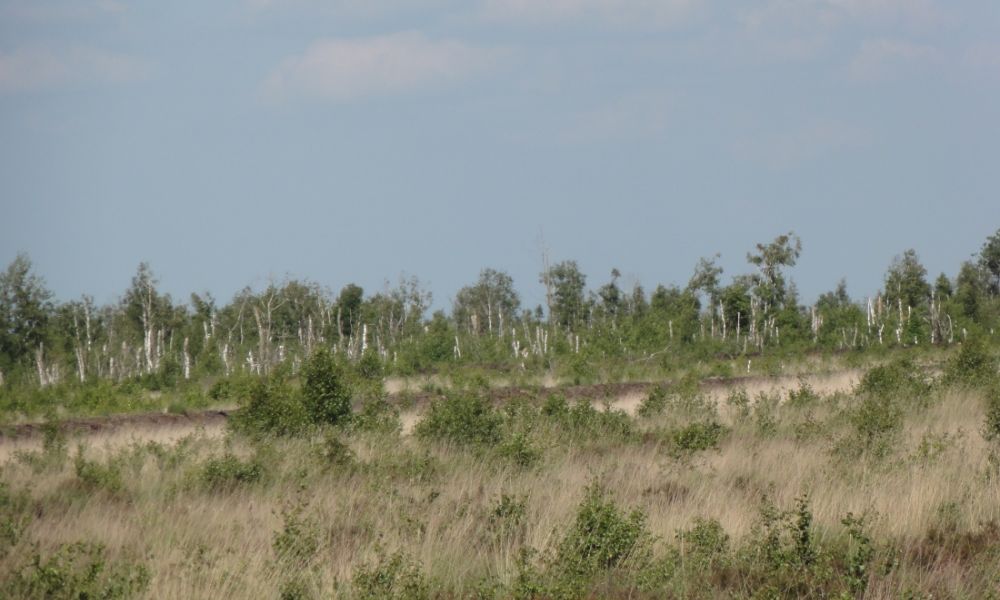Birch Trees
Recognising Birch Trees
During the springtime in Esterwegen as in many regions, the birch tree is a common sight – as a maypole. Anyone who has ever set up a maypole knows how easy it is to spot the birch tree. It’s simple leaves with serrated or notched edges are typical for the birch family. Perhaps even more characteristic is the whitish shimmering colour of its constantly regeneration bark.
Birch trees grow in northern countries and as such are often exposed to cold temperatures. The light-coloured surface of the birch tree ensures that the sunlight is reflected thereby protecting the trunk from heating up too quickly and splitting. At the same time it protects the birch from losing too much water. White birches and silver birches are typical for this region and it’s easy to tell them apart.
The crown of the silver birch is rounded and its trunk is straight while the white birch has a more irregular crown and is broader. Many white birches grow as small shrub-like trees, while silver birches usually get to be over 20 m tall. The silver birch – also known as a weeping birch – gets its name from the long branches that hang down like a curtain while those of the white birch grow up at an angle. The white birch grows in drier spots a little away from the bogs, while the silver birch grows in the region of wet ground.
To confidently be able to tell the difference an attention to detail is required. The leaves of the white birch are doubly serrated while those of the silver birch are only singly serrated. The underside of a white birch leaf shows the leaf’s veins and is covered with down, while those of the silver birch are completely smooth. It takes a keen eye or a magnifying glass to tell the white and silver birch apart.

Pioneer Plant Spreads Quickly
The birch is an important plant for landscape construction. It is often taken to reforest treeless areas as it grows well in nutrient poor areas, spreads quickly and is mature in the course of just a few years. It is less useful in renaturing damaged raised bog areas because they quickly dry out bogs and displace important bog vegetation like peat moss.
A Variety of Uses for Everyday Life
The Indians of North America used birch bark for constructing light canoes and in the furniture industry birch is prized because of its elasticity. Birch pitch is distilled from the tree’s bark and can be used as a glue or caulking material. Birch bark can also be used to make paper. Its insulating quality makes birch bark a natural choice for nomads to use in tents. In Russia, shoes and capes were made out of birch. As bogs don’t conserve organic materials it is not possible to tell whether the earliest settlers used birch bark in this way. It is most likely though that birch bark was used in the northern German raised bogs to start fires. The Betulin in the bark helps the fire catch quickly even when it rains.
Vital in case of illnesses
The tea made from dried birch leaves contains active ingredients that can help with gout and rheumatism and have a diuretic effect that can ease kidney ailments. Similarly, external applications include water treatments or infusions added to a bath. Juice can be derived from the winter buds that helps against coughs or as a cream that eases the pain of burns and infections. The juice that is collected in the spring is said to have a good effect against hair loss. The Betulin that is contained in the bark also has an antibacterial, anti-inflammatory, and cholesterol reducing effect but is especially useful for healing wounds.

Easy to recognize: a birch tree in the Esterweger Dose (© Projektbüro pro-t-in GmbH)
Die Birke als Heilpflanze | Anthology on health aspects of the birch tree
Militz, Ekkehard (Hrsg.): Birken. Lyrik und Prosa. Grevenbroich: Labonde (2012), ISBN: 978-3937507255






